Patek Philippe Reference 5101: Magnum Opus With Concealed Ten-Day Tourbillon
by Tim Mosso
The Patek Philippe 5101 ten-day tourbillon isn’t perfect: it’s not notably shock tolerant, there’s no lume, and one could fault its 25-meter water resistance. But most important of all, I can’t afford it.
That’s it; I can’t broadly critique a watch so ravishing it should come with a parental warning and an age advisory. Since its supernova 2003 debut, the 5101 has established a towering reputation that is, if anything, insufficient to convey the eye-watering beauty and milestone status of this sinuously shaped machine. I’ve recorded videos of at least 7,000 watches and count the 5101 in all of its forms among the handful that have impressed me most.
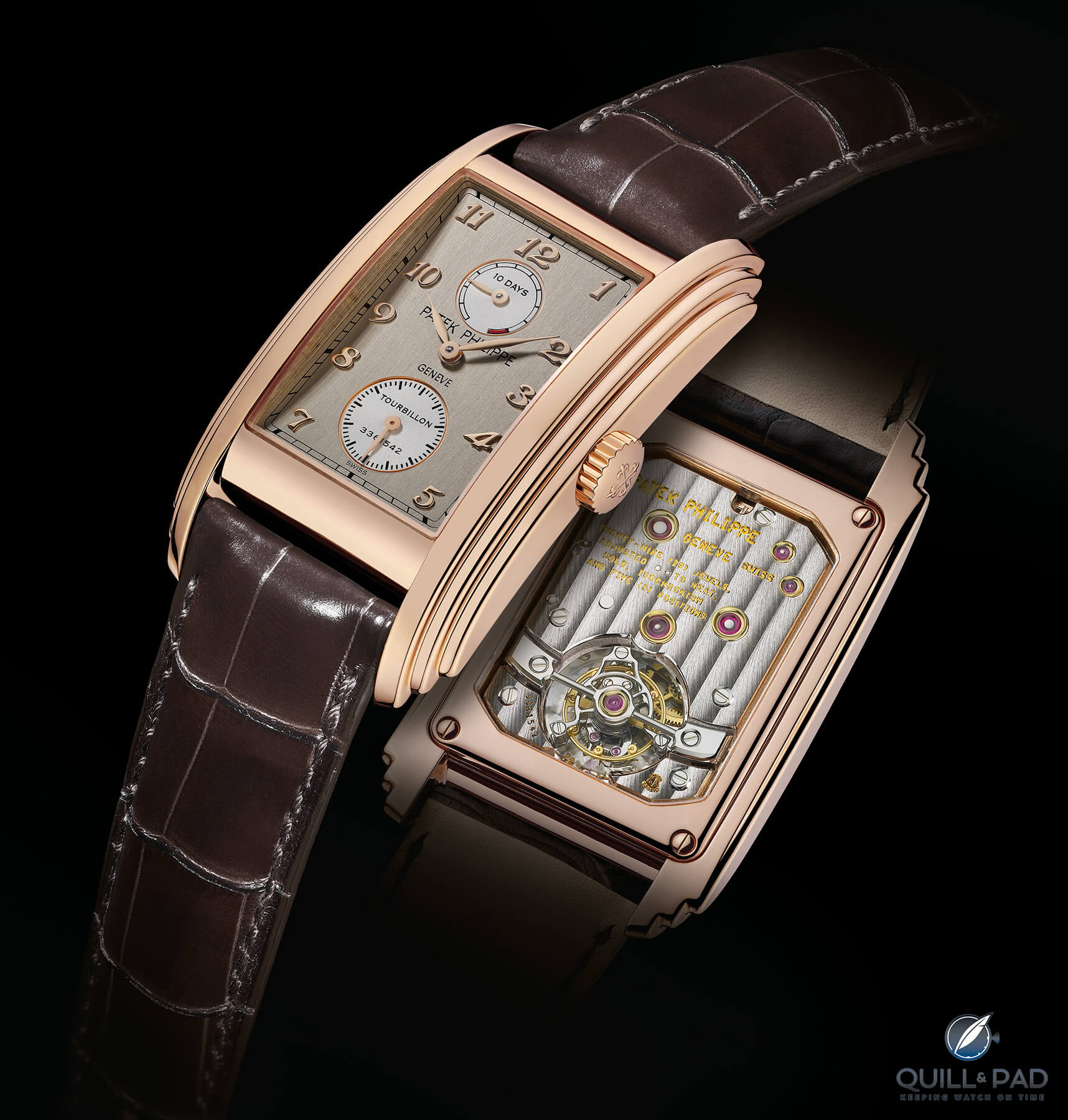
Patek Philippe Reference 5101R ten-day tourbillon in pink gold front and back (2009)
Patek Philippe Reference 5101: premise
The 5101 launched as the platinum 5101P in 2003. At the time, it was an outrageous statement of competence by Patek Philippe. Consider the ten-day power reserve alone. Early in this century, Rolex, A. Lange & Söhne, Blancpain, and F.P. Journe had achieved three-, three-, four-, and five-day power reserves respectively. At the time, IWC’s seven-day Caliber 5000 was the gold standard with seven days of autonomy, but it came at the price of serious timekeeping compromises at the extremes of its mainspring wind.
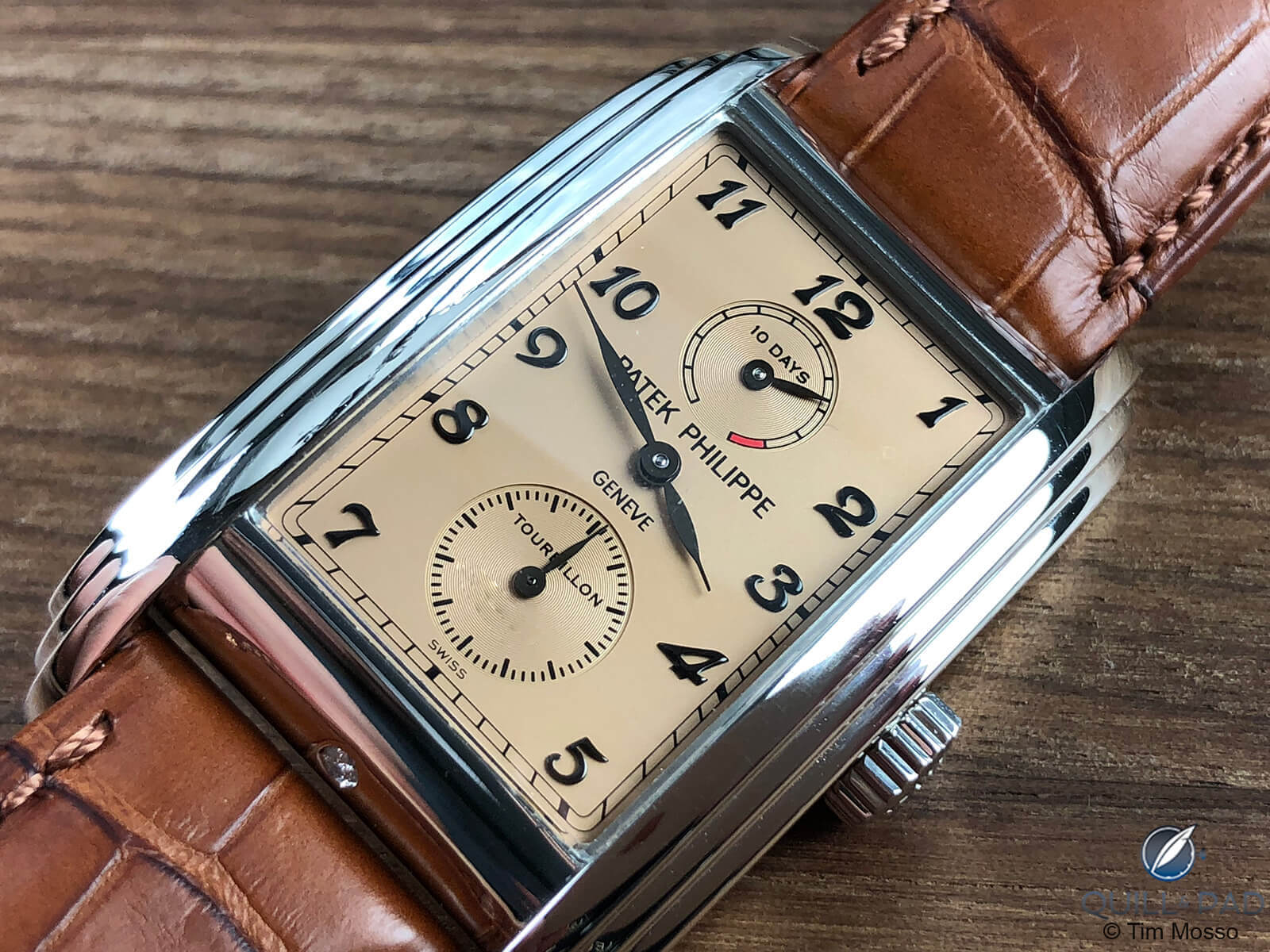
Patek Philippe Reference 5101P in platinum
Patek Philippe had greater ambitions. In a market segment where haute horlogerie brands were – and remain – loath to make specific claims about accuracy, each 5101P was an officially C.O.S.C.-certified Swiss chronometer. Unlike the single-mainspring IWC, which would gain tens of seconds overnight when fully wound and lose as many when low on energy, Patek Philippe’s Caliber 28-20/222 was designed to remain isochronous for virtually all of its autonomy. Patek Philippe adopted the twin serially operating mainspring barrels from its Reference 5100 “manta ray” chronometer, which made its debut in 2000, while adding a tourbillon regulator to create the 5101.
Patek Philippe Reference 5101’s Caliber T 28-20 REC 10J PS IRM
Every 5101 has at its heart an alpha-numeric overload; it’s a stemwinder in literal and figurative terms. Properly speaking, the 5101 is powered by Caliber T 28-20 REC 10J PS IRM. This means that the movement is 28 by 20 mm, includes a tourbillon (T), is rectangular (REC), runs for ten days (10J), has a small-seconds subdial (PS), and features a power reserve indicator (IRM). Each movement includes two mainspring barrels specifically to defeat the kind of fast/slow extremes experienced by long-reserve, single-spring movements like the IWC.
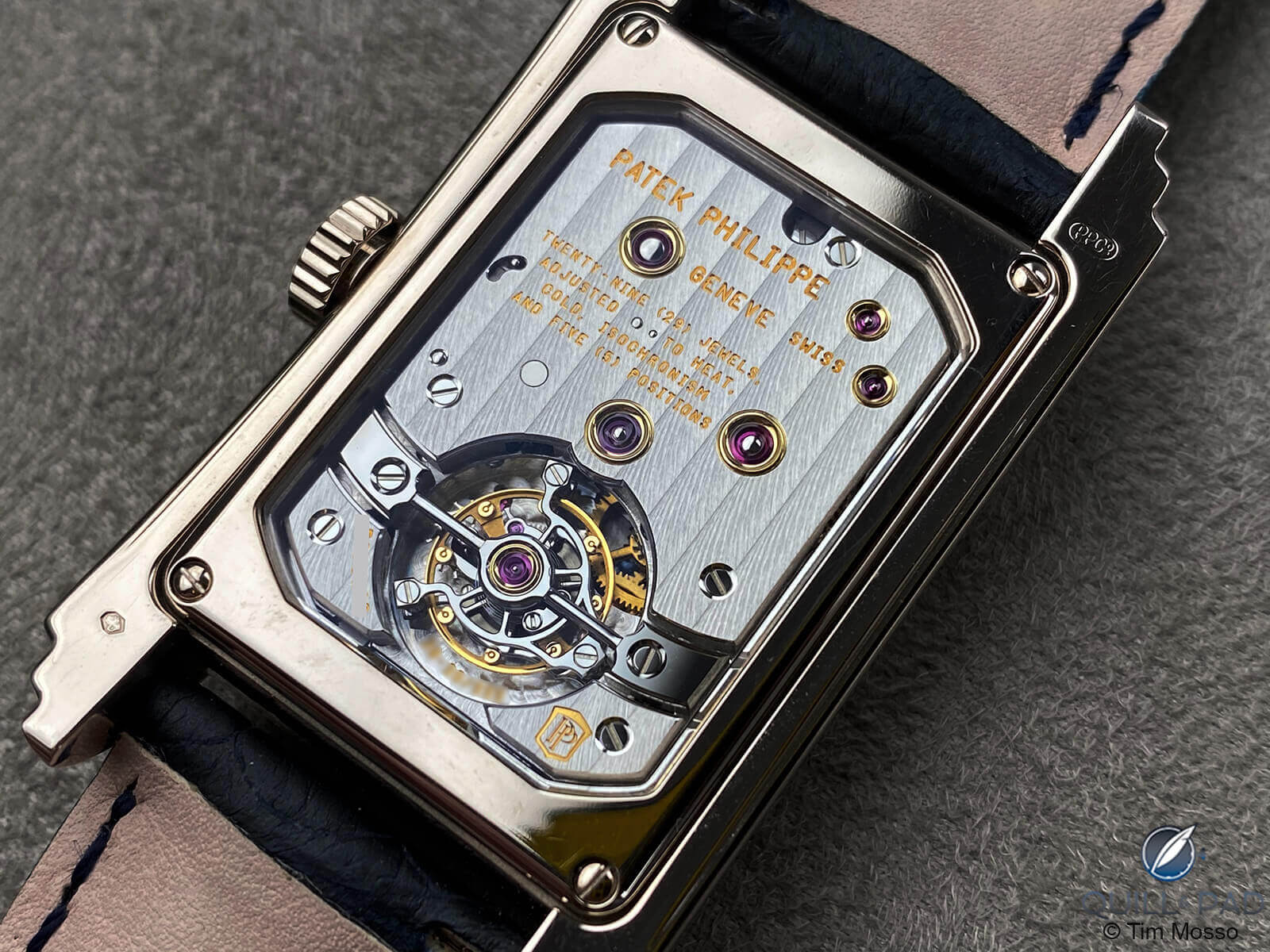
Movement of the Patek Philippe Reference 5101P ten-day tourbillon
Patek Philippe’s tourbillon regulator is orthodox in architecture and exquisite in detail. Partly for the sake of discretion, partly for the sake of tradition, and partly to protect lubricants from UV rays, the 5101’s tourbillon heart is concealed under the dial. The tourbillon assembly, which consists of 72 components, has a mass of only .3 grams. The one-minute rotation drives off an escapement running at 3 Hz.
As with all modern Patek Philippe balances, this one has Gyromax free-sprung architecture, but an upgraded hand-formed overcoil fortifies it against the rigors of five-position testing during the C.O.S.C. chronometer test.
High style and lush detail define this movement. Pre-2009 models feature the Poinçon de Genève, and models built from roughly summer 2009 sport the Patek Philippe Seal; quality is uniform on all versions.
Six of the 29 pivot jewels are ensconced in gold chatons inspired by the pocket watches of Swiss antiquity. The Geneva waves are light, luminous, and ethereal. A black-polished and rounded upper tourbillon bridge creates no fewer than eight interior angles where polished faces meet. Edges of this bridge converge to sharp points. The tourbillon cage itself contains four crisp interior bevels, and two more kiss the flanks of the center wheel under the barrel bridge. This anglage is the real deal, and none of Patek Philippe’s entry-level machine milling marks are to be seen on these chamfers.
Patek Philippe Reference 5101: on the outside
Topside, the 5101’s case and dial exude their own brand of charisma. This is a large watch unsuited to petite wrists, but it makes the most of its sprawling expanses.
Patek Philippe Reference 514 from the 1930s lends its dramatic arch and tiered flanks to the 5101. As a wearable embodient of high Art Deco, the ten-day tourbillon is unrivalled; it’s like strapping the Chrysler Building to your wrist.
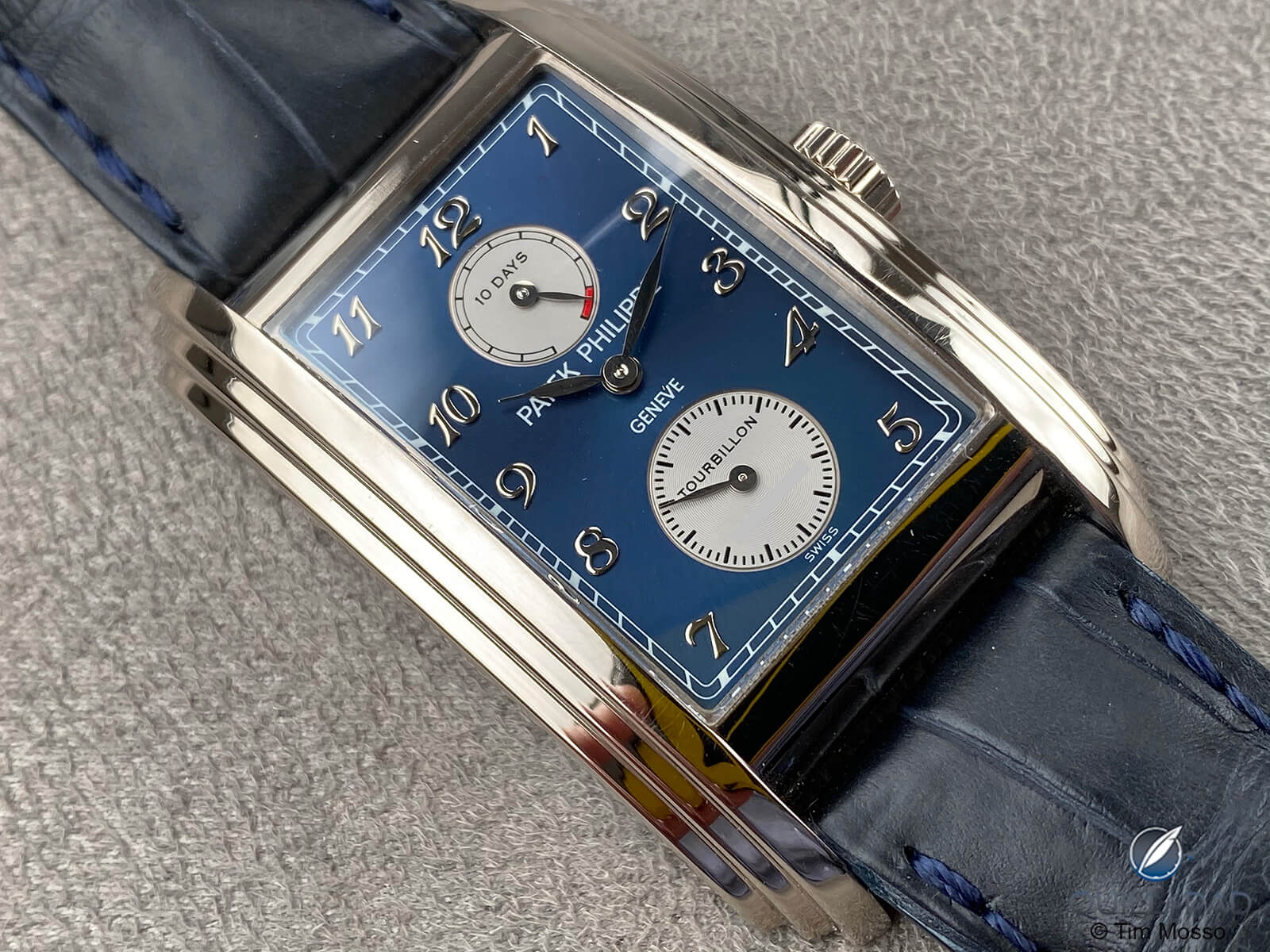
Patek Philippe Reference 5101G ten-day tourbillon in yellow gold
Dial side, the 5101 is an exercise in restraint. Gold hands in leaf profiles pair with Breguet-style Arabic numerals in a succinct statement of vintage cool. Subdials for power reserve and constant seconds provide equal weighting to the top and bottom of the dial; only close examination reveals that the disk at 6 o’clock is larger than the one at 12.
A simple “railroad track” minute scale provides definition on the outer dial. All versions feature a dial-side serial number on the lower subdial: serials starting with a “5” indicate a model with the Patek Philippe Seal; “1” or “3” indicate a Geneva hallmark movement.
Very few differences distinguish the four versions of the 5101. In its 2003 debut iteration, the 5101P included a salmon dial with blackened hands, matching numerals, and salmon-colored subdials; a Top Wesselton diamond sits between the lugs at 6 o’clock, the brand’s mark of a platinum case.
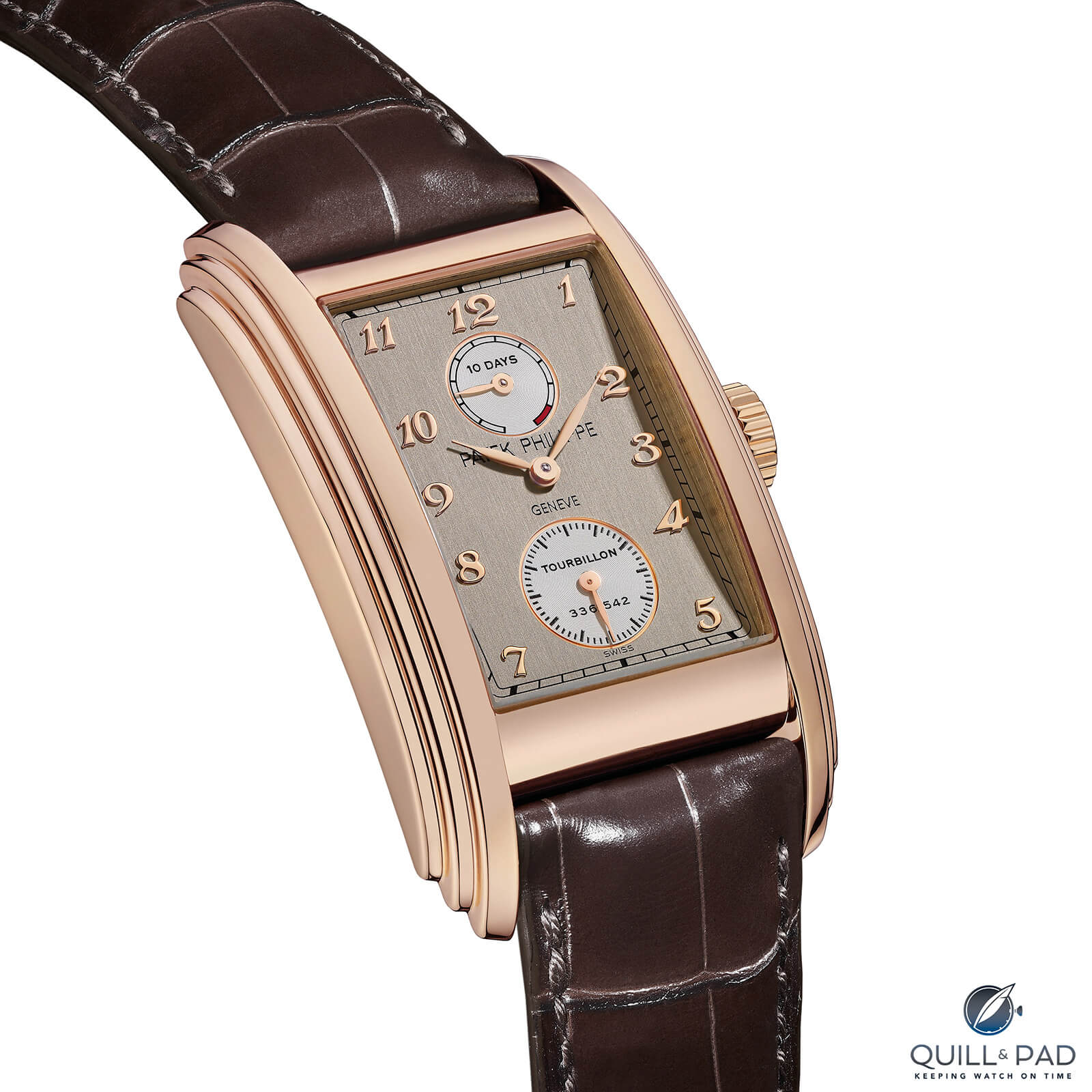
Patek Philippe Reference 5101R ten-day tourbillon in pink gold (2009)
A 5101R with pink gold case and a grey dial came along in 2009; its sub-registers contrast in a lighter shade of grey. The 5101G from 2011 matches the warmth of white gold to a two-tone dial in metallic blue with silver registers, while 2012 witnessed the final variant as a 5101J bowed with a silver-white dial and a yellow gold case.
Reckoning production figures for the 5101 is a challenge. Each new model’s debut coincided with the discontinuation of the previous version. Annual production of any given 5101 variant amounted to dozens, not hundreds, and it’s likely that fewer than 1,000 examples of all Patek Philippe ten-day tourbillon chronometers were manufactured.
The platinum 5101P was the original, most publicized, and most prolific model with perhaps 300-500 made; most of this was front-loaded in the first handful of model years. The pink and white gold models ran for two years each, and 100 units is a fair guess for each variant. Patek Philippe’s yellow gold 5101G may have been available for less than two full model years prior to its retirement. Sales appeared to have slowed significantly during the 2009-2013 run of the R, G, and J models, and unsold examples have been retailed new as recently as 2021.
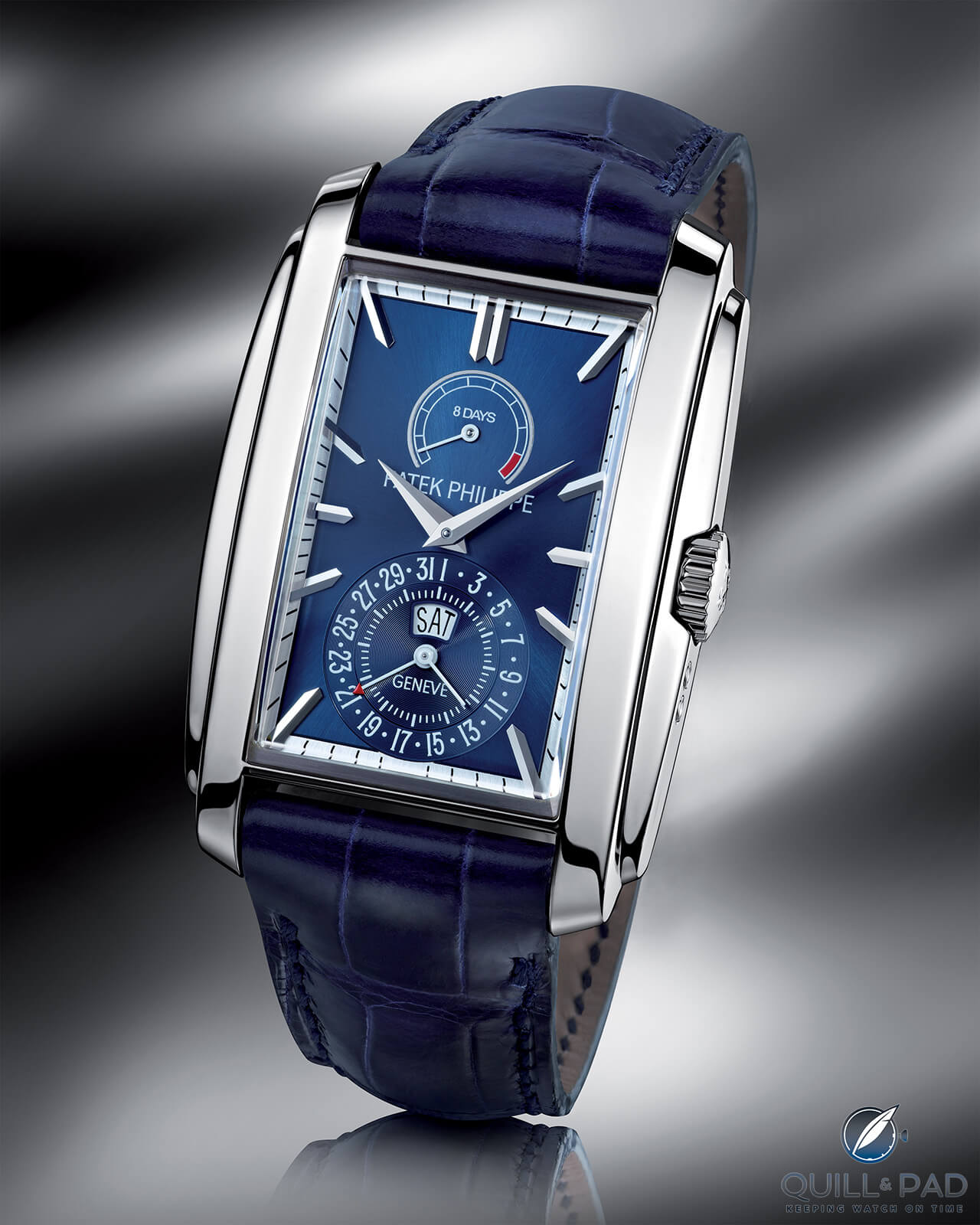
Patek Philippe Gondolo Reference 5200 (2013)
The Gondolo-branded 5200 arrived in 2013, marking the end of the line for Reference 5101. While theoretically the successor to both the 5101 and the 5100, the otherwise worthy 5200 lacked the panache, exclusivity, and grace of the previous tourbillon. The 5101 is Patek Philippe’s achievement, but it feels like a high-water mark for the entire Swiss watch industry.
Its legacy lives on.
In my recent interview with Rexhep Rexhepi, the young watchmaker recalled his first encounter with the 5101 as a watershed moment in his five-year apprenticeship at Patek Philippe. The style, the beauty, and the uncompromising standards of the ten-day tourbillon first spurred Rexhepi’s resolve to create his own watch – and to do so at a level commensurate to the 5101. Every Rexhep Rexhepi Chronomètre Contemporain that leaves Geneva owes a small debt of gratitude to Patek Philippe’s magnum opus.
Quick Facts Patek Philippe 5101 Ten-Day Tourbillon
Case: 29.6 x 51.7 x 12.2 mm in white gold, pink gold, yellow gold, and platinum
Movement: manual-wind Caliber T 28-20 REC 10J PS IRM with one-minute tourbillon, 240-hour power reserve, 3 Hz/21,600 vph, official C.O.S.C. chronometer and Seal of Geneva until 2009, overcoil hairspring, free-sprung balance
Functions: hours, minutes, seconds; power reserve indicator
Production years (all variants): 2003-2013
Tim Mosso is media director and watch specialist at Watchbox.
* This article was first published on December 24, 2021 at Patek Philippe Reference 5101: Magnum Opus With Concealed Ten-Day Tourbillon.
You may also enjoy:
Behind The Lens: Patek Philippe Rare Handcrafts Ref. 5089G-018 Geneva Harbor Wood Marquetry Watch
Leave a Reply
Want to join the discussion?Feel free to contribute!



Hi Rody Nilsson här jag söker dig jag vill gärna beställa klocka Patek Philippe condolo blue okay thank you hälsningar från Rody Nilsson